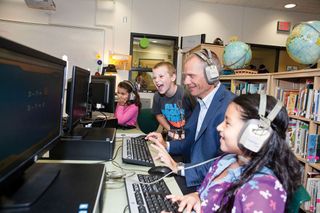The goal hasn’t changed: Student safety has always been a number-one priority. But because many of the menaces are more lethal and omnipresent than ever, safety has become an urgent and expensive challenge for K–12 schools. Next-gen school safety involves keeping everyone in school buildings physically safe, and it also means keeping them safe online. While threats from various quarters have multiplied in recent years, innovative technologies and cutting-edge solutions that can help educators keep kids safe are becoming more sophisticated and user friendly. As these case studies from districts around the country reveal, next-gen school safety is complex, nuanced, and requires a blend of technology and human wisdom. The stakes are high, and lives are being saved.
DISTRICT-SUPPLIED TOOLS = DISTRICT RESPONSIBILITY
“It’s a district’s responsibility to monitor and keep kids safe when they’re using district-supplied digital tools—whether they’re logging on at school or at home,” says Christina Iremonger, Chief Digital Officer for Vancouver (WA) Public Schools (VPS). With 24,000 students and 1:1 devices for all students in grades three through 12, VPS needed a powerful and effective solution to keep students safe online and to ensure that the devices were being used as tools for learning.
“Collaboration and a flexible learning environment are very important,” says Iremonger, “but with Canvas as our LMS we had no access to what students were writing on Google docs, for example, and some students were using it as a chat room.” The team that Superintendent Steve Webb appointed to investigate various security solutions identified Gaggle as the best tool to meet the district’s needs.
24/7 ALERTS AND SERVICES
“It’s worked out really, really well,” says Iremonger. “Gaggle provides 24/7 alerts and real people on the other side of the devices who are highly trained and skilled in looking at the context of potential problems. There are multiple levels of alerts, and they will email, text, or even call in the case of imminent danger. If no one responds, they will call 911 in a case of imminent danger. It’s very reassuring to know that there’s another person looking out for our kids, and we’re not depending on an algorithm to be sophisticated enough to protect them.”
The idea of being on call to respond to 24/7 alerts can seem overwhelming to school personnel who already work long days, but VPS solved the problem by bringing on a few people on supplemental contracts to handle afterhours calls. There aren’t many of these, says Iremonger, but it’s critical to be able to handle them when they do come in.” Local police have been 100 percent supportive, she says, and the school collaborates with local entities to provide wrap-around services as needed.
CRIES FOR HELP
Vancouver has had many incidents of students sharing inappropriate pictures, and families are always thankful to be contacted so they can work with their child. But students are also using the tool to ask for intervention. “Students know we’re watching,” Iremonger says, “and often we find these alerts are their cries for help.” What this means, says Dana Selby, Career and Technical Education, is that “The power of Gaggle has been a sense of relief for some of our students.” Students know their drives are being monitored for inappropriate material and calls for help, and so when they use their school accounts to make threats of self-harm, or to send concerning emails to friends, they know the district will respond. “With our after-hours program we seldom hear the outcome once we’ve contacted the crisis team or law enforcement, but we have yet to receive a complaint about them being contacted. This tells me that families are thankful we’re looking out for their kids and appreciate that we’re willing to do this any hour of the day.”
A COMPLETE AND CUSTOMIZABLE SOLUTION

Sioux Central (IA) Community School serves 700 students, pre-K–12, in one building. The district is 1:1 with iPads, which students in grades seven through 12 can take home. The student body is very diverse, says Director of Technology Rob McCartney, with a unique mix of ethnicities and quite a large LGBTQ community. While Lightspeed’s Relay satisfies the CIPA requirement to provide a content filter, it’s much more, McCartney says. “It’s a complete solution for internet safety for students.”
SAVING LIVES
It’s also a life saver. When Relay picked up a student’s search for suicide methods, the district was able to get the student help immediately. “It saved that student’s life,” McCartney says with a catch in his voice.
McCartney appreciates the innovative features of Safety Check, which sends screenshots of the actual search in addition to screenshots over the following five minutes. This critical context helps to determine, for example, if the student is doing school-related research on a topic such as suicide or if they’re contemplating action.
Students need to be protected 24/7, McCartney says, because they’re connected 24/7. If they’re being bullied, for example, even at home they’re not away from it. Another product the district uses to help protect students is Bark. “We love it,” says McCartney. “It’s free to schools and scans district-owned G Suite and Office 365 accounts.”
CUSTOMIZATION AND SUPPORT
Sioux City also appreciates Relay’s advanced reporting features and the ability to customize each student’s profile as well as to toggle features on or off by grade level. Teachers can set controls to allow certain sites in their classrooms. “It makes it easier to manage the whole class,” McCartney says. “Teachers can engage and direct students and focus on educating instead of walking around checking screens.” Parents can also opt in to receive weekly reports. Some features also help to make the devices personal, such as the ability to block Facebook during school hours and then allow students to log on when school is over.
For all of Relay’s sophistication, “the implementation has been a breeze,” McCartney says. It’s all cloud based and is a “set it and forget it” solution to keep students safe. McCartney also appreciates that Lightspeed focuses only on education. “And their support is phenomenal,” McCartney says. “They really care.”
CRIME PREVENTION THROUGH ENVIRONMENTAL DESIGN
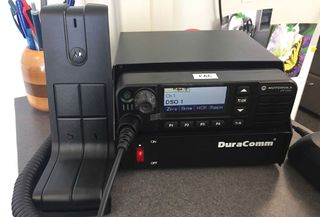
Increasing student and staff safety was a major focus of the 2016 school bond in Gresham-Barlow (OR) School District. Specifically, the district was tasked with three tasks: limiting access points to school buildings, installing modern equipment for emergency communications, and installing internal classroom locks. “We call it improving our SAT score—surveillance, access control, and territoriality,” says director of district safety and security Kevin Sutherland. Crime prevention through environmental design, he says, requires the kind of data-driven, third-party assessment that NewDawn Security and its expert team and principle, Sean Spellecy, provide. Sutherland himself brings credentials as a former Marine and law enforcement officer to this new position in the district.
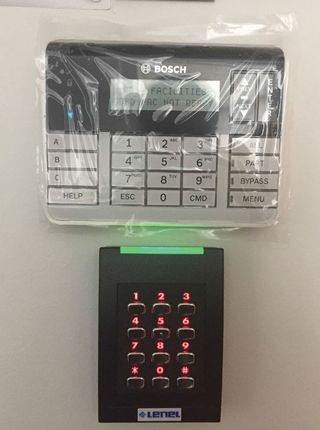
After NewDawn conducted a data-supported assessment, Gresham-Barlow installed intrusion alarms, video surveillance, and district-wide radio communications equipment. The perimeters of all schools are secure, Sutherland says, and every classroom will be equipped with interior locking doors by the end of the school year. Through its radio enhancement, the district can communicate with all schools and departments in a moment to change from normal to emergency operations.
THE FORCE MULTIPLIER
All of the best tech and equipment won’t make a difference, however, unless the protocols are simple and clear enough so that everyone working in a K–12 environment can implement them under stress. A comprehensive safety plan, therefore, takes into account both the physics of things (the equipment and target hardening) and the psychology (operational protocols) used by staff interfacing with technology.
All Gresham-Barlow staff receive training, as well as regular refresher training, in situational awareness, life safety, and option-based decision making, as well as training in Standard Response Protocol (SRP) and Standard Reunification Method (SRM) from the “I Love U Guys” foundation. In addition, Gresham-Barlow has a collaborative relationship with Concordia University’s VR lab, where emergency technology is used in simulation training. Everyone, Sutherland says, is empowered to implement a “lockout, lockdown, shelter or evacuate” to respond to an emergency.
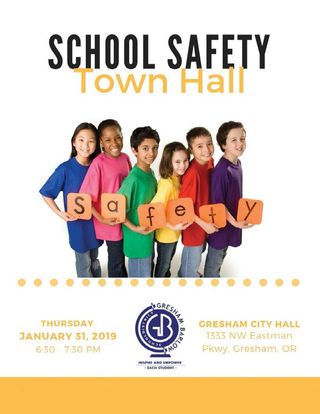
Gresham-Barlow also held a successful town hall to educate stakeholders on their school safety goals as well as a tabletop exercise for key leaders and first responders using the FBI video The Coming Storm.
“Tech is great,” Sutherland says, “and there are lots of collaborative tools and resources, but the force multiplier is empowering students, staff, and parents to take responsibility for their own life safety and to work together to create a safe school environment.”
For more information about how to implement an active shooter drill, go to https://www.opb.org/radio/programs/thinkoutloud/segment/what-goes-into-planning-an-activeshooter-drill/ [Source: OPB, “What Goes into Planning an Active Shooter Drill?”]
POWER TO THE TEACHERS

One of the features that West Rusk (TX) CCISD IT co-supervisor Cody Walker appreciates most about Impero Education Pro is that it puts power in the hands of teachers. With this robust, consolidated solution, teachers can manage and set the safety policies that work best for them and their students in real time, including the dynamic list for key-word detection.
“There’s never one single answer that works in every classroom,” Walker says, “and Impero is modular, so it’s easy to manage different students in different periods.” Teachers can see live thumbnails from selected machines, receive alerts of inappropriate activity, and address issues as they arise. Beyond security, Education Pro facilitates learning as well. Teachers can broadcast their own screen to every device in the classroom, for example, instead of to a whiteboard.
With the basic training the district offers teachers, they’re able to set advanced policies. “It’s easier to learn Impero than to learn all the functions in Excel,” Walker says. Education Pro also makes it easy to manage information—so people have the data they need without being overwhelmed by what they don’t need. A lab teacher, for example, can see who logged into a lab, when, and what they did. That information can be shared and exported as needed.
Thanks to remote monitoring and screenshot reporting, the district was able to thwart plans for illegal drug deals. The proper school staff were tipped off, the situation was monitored, and screenshots gave instant proof so the situation could be dealt with swiftly and discretely.
POWER TO THE TECH DEPARTMENT
As one of two tech department employees responsible for the 22-building district with 1,300 students and staff, Walker is delighted to give teachers the ability to manage these devices so they don’t have to call IT for every customization. He also appreciates Impero’s powerful functionality for managing the district’s devices. “The ability to pull inventory on a device is itself awesome,” he says. These functions save lots of time, and the power management tool, which enables the district to power off machines on a schedule, also saves power and money.
“Education Pro has a whole plethora of tools that are useful for both administrators and teachers,” Walker says. “There’s never a dull day. We have to be general surgeons and on our toes, but we have great tools like Education Pro to help us. I can’t imagine the district running efficiently without it.”
TARGETED, STREAMLINED TRAINING AND ACCIDENT REPORTING
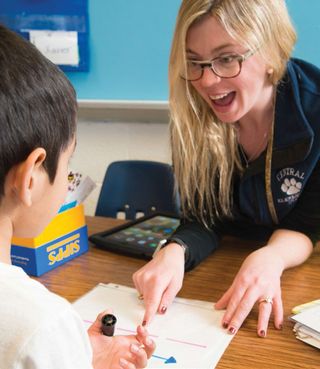
In 2015, Adams County (CO) School District 14 (Adams 14) was looking for a simple, efficient solution to maintain compliance and to help teachers and students feel safe so they could concentrate on teaching and learning. To solve the vulnerability issues surrounding their paper-based safety management process, the district decided to implement the EmployeeSafe Suite, an online risk management and school safety solution from PublicSchoolWORKS. The solution helped the district streamline staff training, accident reporting and management, and more.
ACCIDENT MANAGEMENT
Through a link on the district’s website, employees now complete an online accident report form that ensures they complete all pertinent fields. This helps eliminate the need for follow-up inquiries. Submitted reports are automatically sent to the district’s insurance company and to Regina Baca, Executive Assistant to Operations, Finance & Risk, for processing. All reports are stored online, and Baca says the system has also significantly decreased the amount of time it takes to process accident reports.
24/7 TRAINING

“The suite’s embedded automation features changed the way we deploy staff safety training and manage completion,” says Mark Langston, Manager of Educator Effectiveness. Employees can complete the tool’s online training course whenever and wherever they want—as long as they do so before the deadline. EmployeeSafe automatically updates online training transcripts and sends supervisors a report listing employees who still have outstanding training once the deadline passes.
EmployeeSafe has also provided staff with more access to information about safety best practices. Because the training needs of classroom teachers, custodians, paraprofessionals, PE teachers, food handlers, and others are very different, the more than 500 courses in the online course catalog cover a large range of safety issues, including suicide prevention, chemical safety, bullying prevention, and more. Adams 14 has deployed dozens of additional courses to support employees’ specific job responsibilities and help ensure they’re safe on the job.
“We also use the online courses as improvement or remediation tools,” says Langston. He’s assigned courses, for example, to employees struggling with effective communication and to those who need additional courses on developing leadership qualities and positive workplace relationships “We have a solid library of content to pull from,” he says.
“Security is a 24/7 task,” says Langston, “and with EmployeeSafe, access to proper training is available 24/7 as well.”
INTEGRATING SYSTEMS FOR EFFICIENT COMMUNICATION
When the Walton (NY) Central School District needed to replace its PBX phone system last year, it chose a Cisco VOIP platform because its InformaCast integration would allow them to communicate with its roughly 1,200 students and 250 staff across three locations. “InformaCast provides us with a means to send emergency messages to multiple platforms and individuals with the click of a button or an automatic trigger,” says Walton’s director of technology and safety coordinator Rick Robinson. The district was able to incorporate existing hardware with new additions such as cameras, digital signage, Cisco VOIP phones, IP speakers, and door access control. “The most important aspect of the entire project was making sure all of our systems work together,” Robinson says. InformaCast gave the district the features needed to make sure all new systems, which weren’t meant to work together, could coexist and work well together.
COMPREHENSIVE COMMUNICATION IN EVERY SITUATION
This integrated system enables the district to manage alerts for 911 calls, lockdown situations, fire alarms, and door access control.
“InformaCast allows us to track all 911 calls and distribute the information accordingly,” Robinson says. “When 911 is dialed, all members of that building’s first response team are immediately notified via email, text, or Cisco phone display and computer desktop popup. The message includes the name of the person who placed the call, a description of the device, as well as the time and date. This has drastically decreased our response time to incidents, as every vital member of the response team is notified at the same time of the call and location.”
Similarly, the system allows them to send and receive notifications when a fire alarm is triggered. Email and text notifications are sent to members of the emergency notification squad with the date, time, and description of the emergency. Separate and distinct messages are sent to all Cisco phones, classroom desktop computers, smartboards, digital signage, and IP speakers, Robinson says.
“A hold in place, or lockdown, can be triggered by any staff member with that shortcut on their phone or by dialing code for that emergency,” he says. In addition to displaying the alert on all school signs and devices, vital lockdown information is immediately emailed and texted to all members of the emergency notification team, who then contact the proper authorities.
With InformaCast’s M2M feature, the district has integrated with door access control systems. Using a custom phone app, select team members can trigger lockdowns from their cell phones using two thumbs. Triggering any emergency immediately disables card access into buildings, except for members of the emergency response team and people who possess an emergency access card.
The implementation of this technology has transformed the way Walton CSD attempts to keep the community’s children safe, says Robinson, and enables the district to focus on their main priority, which is providing high-quality education in a safe environment where all students can flourish and grow.
2018–19 SELF-HARM STATISTICS
Many educators report that next-gen school safety solutions are helping them to protect students from self-harm. Gaggle’s new student safety report lists the following stats from the first six months of the 2018–19 school year:
• Five out of every 10,000 students threatened that they—or someone they knew—were planning a suicidal act or were engaging in self harm.
• Four out of every 10,000 students shared child pornographic content on their school account involving themselves or peers.
• One out of every 10,000 students planned a specific threat of violence toward others or their school.
Gaggle found more than 51,000 instances of questionable content over a six-month period among its 4.8 million users, and identified more than 56,000 safety issues. Though they face an enormous challenge keeping students safe, if K–12 leaders have visibility into students’ online activity they can step in and take appropriate action to protect students from harming themselves or others—in some cases, preventing a situation from becoming tragic before it’s too late.
